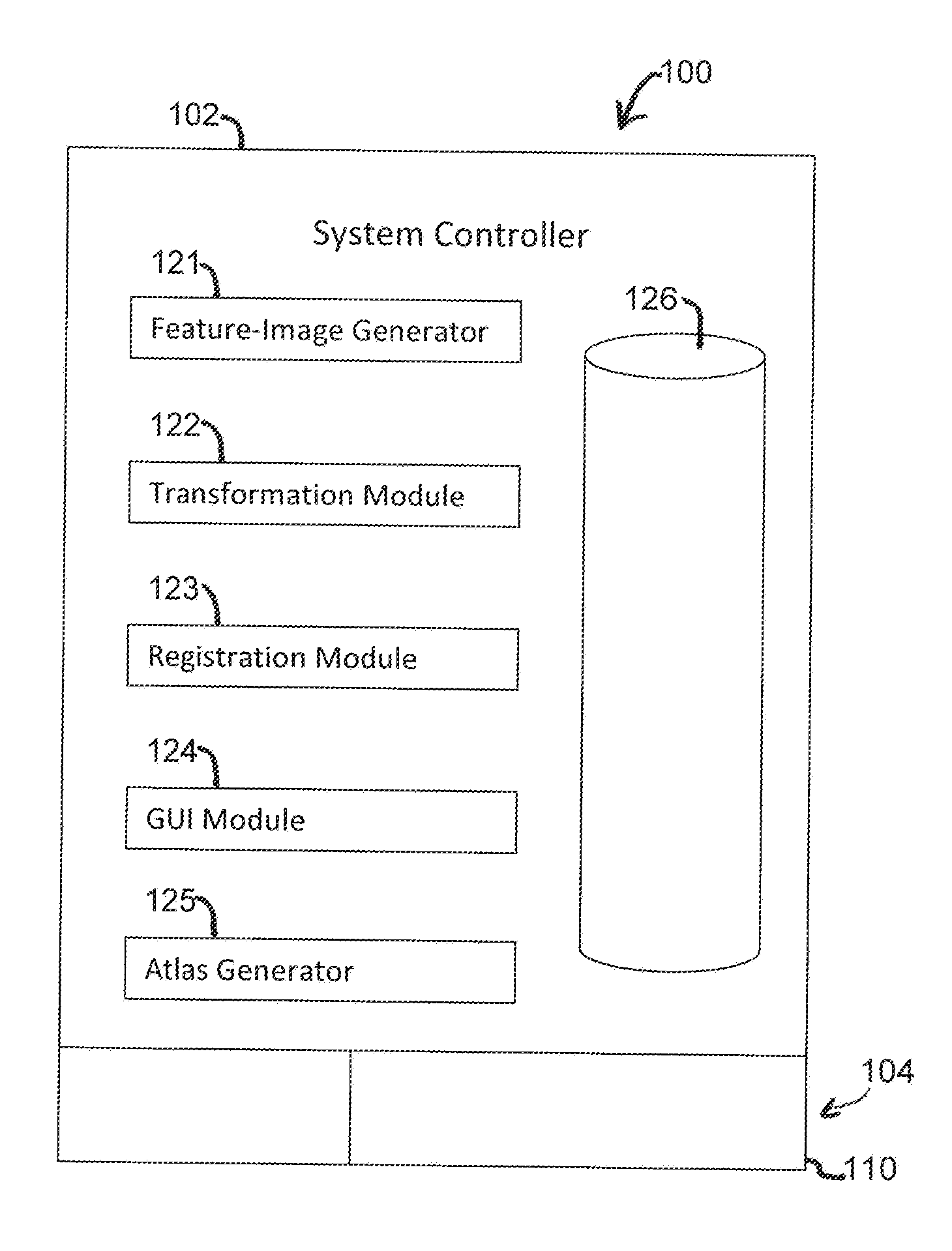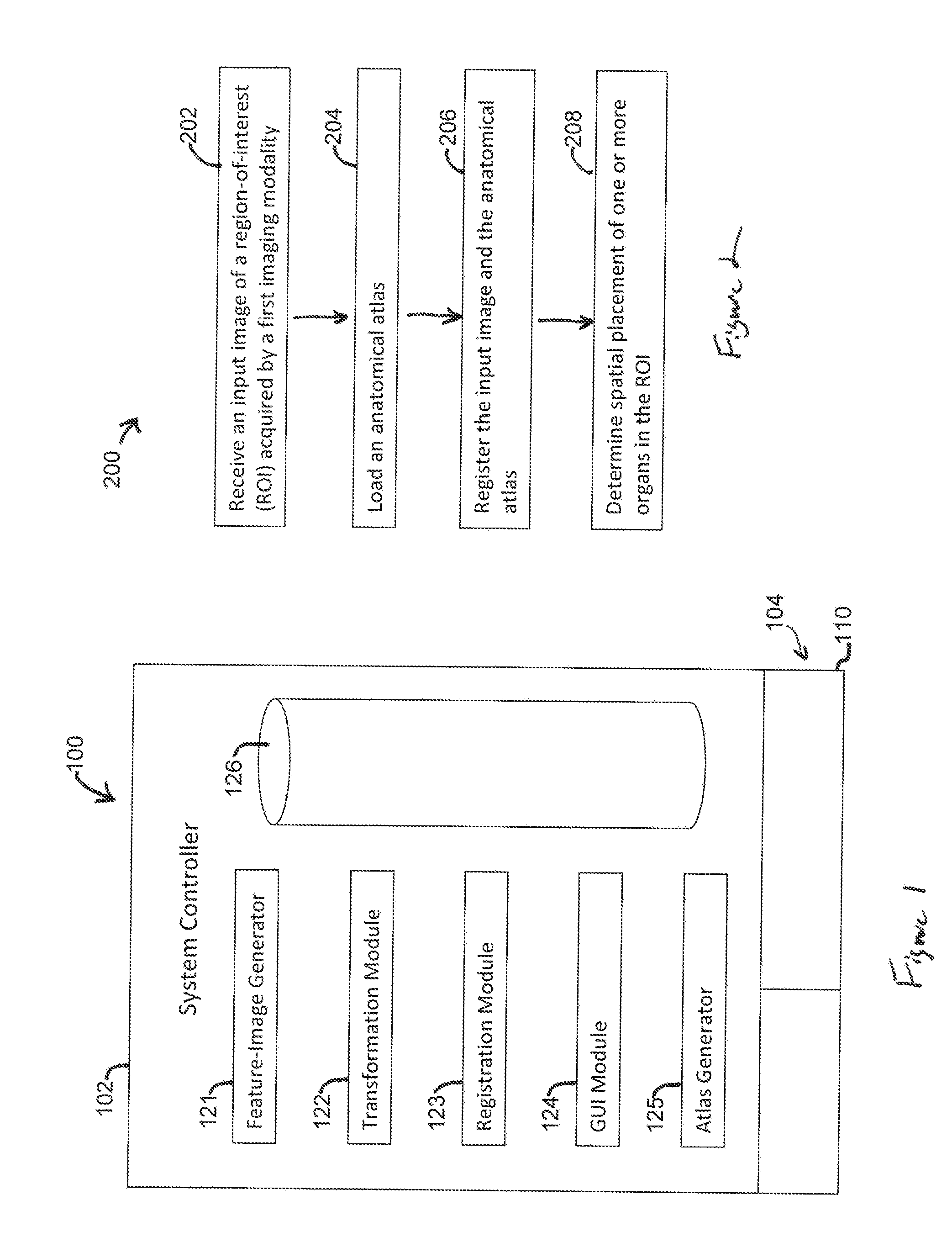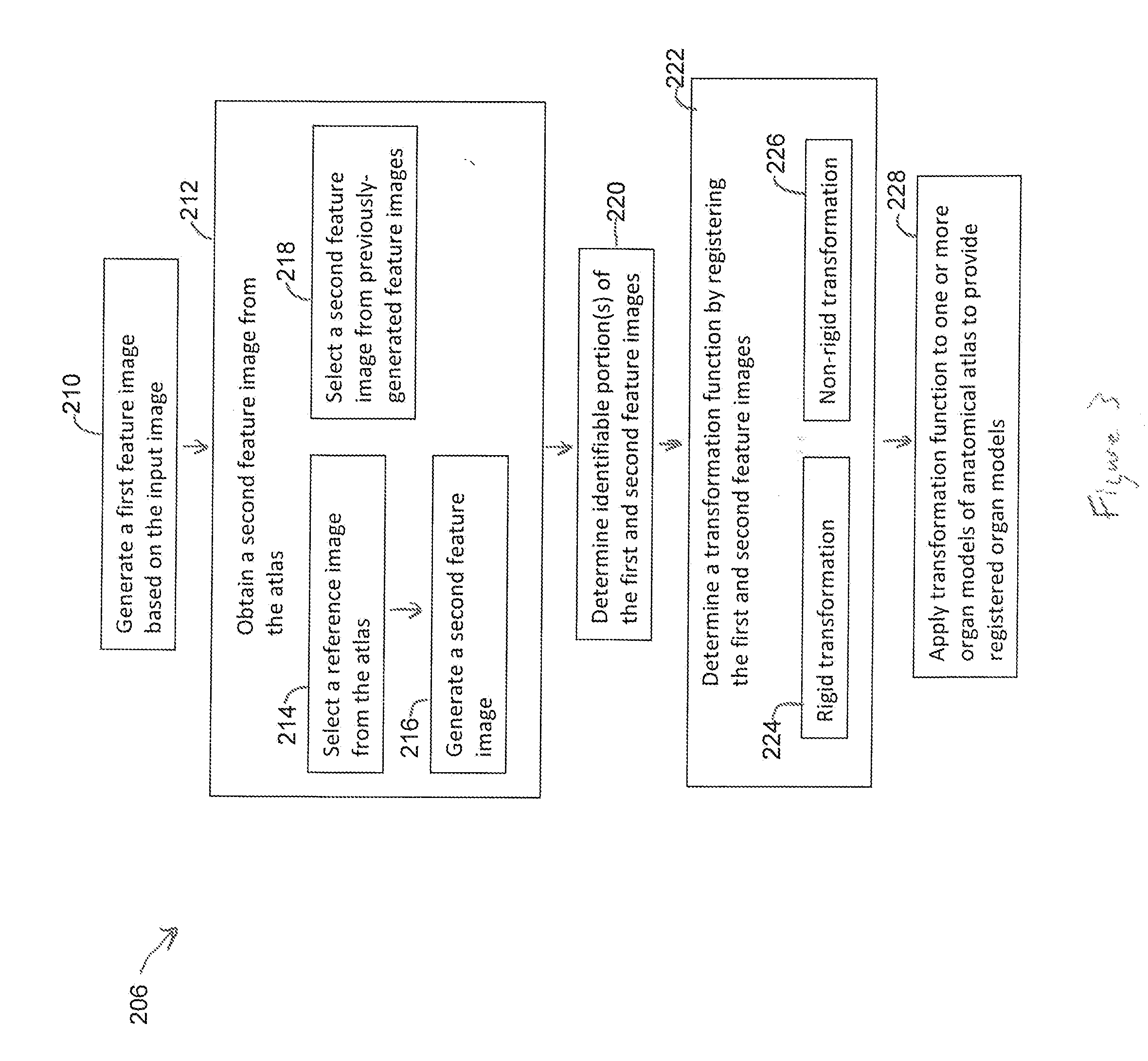Methods and systems for determining a transformation function to automatically register different modality medical images
a technology of transformation function and medical image, applied in the field of medical imaging system, can solve the problems of requiring a significant amount of time and/or computing resources for registration and segmentation operations
- Summary
- Abstract
- Description
- Claims
- Application Information
AI Technical Summary
Benefits of technology
Problems solved by technology
Method used
Image
Examples
Embodiment Construction
[0016]Embodiments described herein include methods, systems, and computer readable media that may facilitate at least one of processing or analyzing medical images of a region-of-interest (ROI) (also referred to as a volume-of-interest (VOI)). For example, embodiments may include methods, systems, and computer readable media that generate a multi-modality anatomical atlas. Embodiments may also include methods, systems, and computer readable media that determine a spatial placement of one or more organs in a region-of-interest (ROI).
[0017]The medical images may include image data or datasets that represent a visualization of the ROI. The image data may include pixels (or voxels) having signal intensity values or other values / qualities / characteristics that may be processed to form the visualization. Various imaging modalities may be used to acquire the medical images. Non-limiting examples of such modalities include ultrasound, magnetic resonance imaging (MRI), computed tomography (CT...
PUM
 Login to View More
Login to View More Abstract
Description
Claims
Application Information
 Login to View More
Login to View More - R&D
- Intellectual Property
- Life Sciences
- Materials
- Tech Scout
- Unparalleled Data Quality
- Higher Quality Content
- 60% Fewer Hallucinations
Browse by: Latest US Patents, China's latest patents, Technical Efficacy Thesaurus, Application Domain, Technology Topic, Popular Technical Reports.
© 2025 PatSnap. All rights reserved.Legal|Privacy policy|Modern Slavery Act Transparency Statement|Sitemap|About US| Contact US: help@patsnap.com



